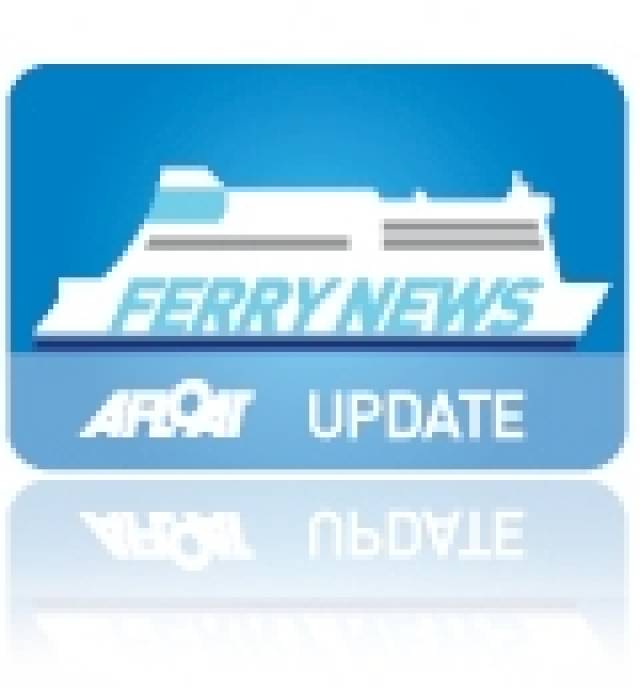#FerryDryDocking – Waterford Castle Hotel & Golf Resort on Little Island, sold recently by Colliers International to new owners of the scenic River Suir estate located a mile downriver of the city is temporally without it's private car-carrying ferry, writes Jehan Ashmore.
The 14 car-capacity ferry, Mary Fitzgerald which otherwise normally brings guests to the 4-star hotel and golf patrons across the picturesque King's Channel to Little Island, is currently in a dry-dock having been taken off-service last weekend.
It is understood the ferry is to resume service at the earliest tomorrow or the following Friday of this week. The ferry's passage to dry-dock last Monday involved heading further downriver as far as the disused railway Barrow Bridge and then upriver to the New Ross Boat Yard.
This same dry-dock is where the JFK Trust began building the famine replica barque Dunbrody. The newbuild when completed was floated-out from the banks of the Co. Kilkenny facility this month 14 years ago in 2001.
It transpires that the hotels previous 18-vehicle ferry Loreley as previously reported on Afloat.ie, had already been replaced in August by the 1972 built former Lough Swilly, Co. Donegal ferry Foyle Rambler.
This was the actual ferry that was as advertised for sale at €700,000, albeit as a separate lot to the luxury 19-bedroom hotel. According to the property agency, the new hotel owners also acquired the ferry.
She is aptly renamed Mary Fitzgerald after the final member of the Fitzgerald dynasty who were the Kings of Ireland all but in name and who resided in their Norman Keep built over 800 years ago.
As for the brief history of the hotel, the original business opened in 1987 and is as otherwise normally accessed by the private-ferry. When Mary Fitzgerald returns to service, she will resume the frequently operated 3-minute passage time between Ballinakill on the mainland and Little Island.
Despite a significant upgrade of Mary Fitzgerald for her new southern role, further work is required to include her Azimuthing Schottel engines which generate 508KW in a channel that can have an 8-knot current. Since her debut, cable-wires have been installed like her predecessors to assist in guiding the ferry between the slipways on either side of King's Channel.
In order to comply with a Marine Safety Certificate, all the current work in the dry-dock is subject to the satisfaction of marine survey officials at the Department of Transport.
As previously alluded, it is understood that the ferry is scheduled to return to service at the earliest tomorrow or Friday. This will see her resume the routine yet busy role of shuttling visitors and staff to and from the island resort.
On the northern shore of Little Island is the Queen's Channel which was widened and and made straighter to make easier access for the current commercial shipping route to reach Waterford City quays.
Up to around 1900, it was the Kings Channel that had served this role, however the majority of present-day vessels berth downriver of Waterford City at the Belview terminal on the Co. Kilkenny side of the Suir.































































